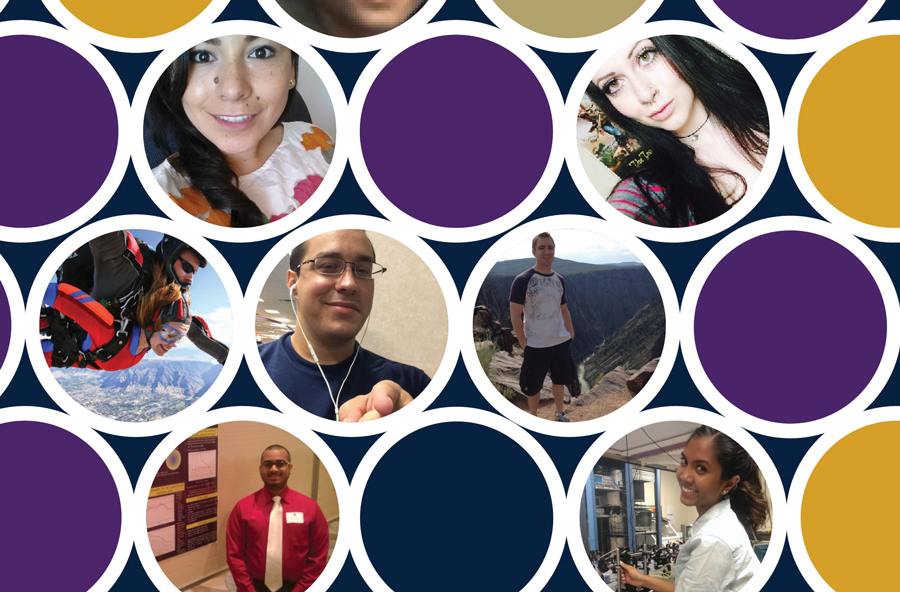Why Discuss Diversity in a Physics Magazine??
Fall
2014
Special Feature
Why Discuss Diversity in a Physics Magazine??
The importance of different points of view
By:Geraldine Cochran, Associate Director, Multicultural Center for Academic Success, Rochester Institute of Technology, NY, and Ramón S. Barthelemy, Fulbright Scholar
Rochester Institute of Technology
Diversity is Good for the Community
Not everyone had the privilege of growing up on Chicago’s South Side, as the first author of this piece did. Not everyone had the privilege of living next door to the Great Lakes, as author number two did. Being friends and colleagues, we often share our experiences and different perspectives with one another. Is that diversity? Is that all there is to it?
Two minds are better than one, you’ve heard. That’s true, but people with similar backgrounds and experiences tend to think more similarly than people with different backgrounds and experiences. When problem solving, groups can benefit from having people with diverse backgrounds and experiences because they can offer a variety of perspectives, often leading to a better result. The scientific literature supports this idea; a study published in Psychological Science found that the perspectives of minorities in racially diverse groups contributed novelty and helped group members think about complex issues.[1]
The beauty of physics lies in its enduring applicability to new problems and new situations. To solve increasingly complex global problems, we need to bring together people with diverse backgrounds, different perspectives, and a variety of creative approaches. Moreover, the results of physics research are being used to address problems faced by diverse groups of people. Evidence suggests that diverse teams are more effective at addressing the needs of a diverse population. The first voice-recognition systems, calibrated to male voices, performed poorly in response to women’s voices; early car airbags were designed for adult males, “resulting in avoidable deaths for women and children.”[2]
The Physics Community in the United States Does Not Reflect the Population Distribution
Today in the United States, many groups are underrepresented in physics. African Americans and Hispanics made up only 2.1 and 3.2 percent, respectively, of physics faculty in 2012 [3], but they represent over 13 and 17 percent of the population. Women, though 51 percent of the general population, accounted for only 21 percent of instructors or adjunct faculty, 22 percent of assistant professors, 15 percent of associate professors, and 8 percent of full professors in physics in 2010.[4] Statistics on those who identify as lesbian, gay, bisexual, and transgender (LGBT+) in physics are limited and complex, but anecdotes suggest that this group is marginalized in the field of physics. (See Elena Long’s story on page 20.)
Recognizing the Realities Can Lead to Action
National funding agencies such as the National Science Foundation (NSF) and the Department of Energy have supported programs and research aimed at broadening participation in physics, as well as solicitations that explicitly encourage underrepresented groups and individuals with disabilities to apply for funding. NSF ADVANCE funds projects aimed at increasing the number of women pursuing academic careers in science and engineering. It focuses on transforming institutional structures to reduce barriers to the advancement of women in academia (www.nsf.gov/pubs/2014/nsf14573/nsf14573.pdf).
Physics education research, an interdisciplinary field, has helped us to figure out how to create more equality in the classroom.[5] Just discussing the fact that women are underrepresented in physics, for instance, can encourage women to pursue careers in physics.[6] Barriers to the success of ethnic minorities have also been identified; black women have difficulty finding study groups in general, which can be a hindrance to their learning.[7] Psychological interventions can help to address some problems, such as the danger that gender and ethnic minorities will behave like the negative stereotypes they hear about their groups. In one study these interventions reduced gaps between how well men and women did in an introductory college physics course.[7]
Much important, research-based work is being pursued in physics to help diversify our community of practitioners. But what can you do in your daily life to take advantage of the many benefits of diversity? When putting together study groups, picking partners for lab, and electing SPS chapter officers, remember to keep diversity in mind. Don’t just pick people off the top of your head; consider students with a variety of backgrounds, skills, talents, and interests. When thinking about who to invite to speak at your next SPS meeting, keep diversity in mind. Look on your department’s website—or beyond, to faculty and staff in other departments or alumni—to find people with unique backgrounds and experiences. If you do peer recruiting, think about places on campus and student groups you might not consider otherwise. When you plan outreach events, explore a wide variety of types of places and audiences. Whatever you do, keep diversity in mind. Doing so will strengthen our entire community. //
References
1. Antonio, A.L., Chang, M.J., Hakuta, K., Kenny, D.A., Levin, S.L., and Milem, J.F.,
"Effects of racial diversity on complex thinking in college students," Psychological Sci. 15(8), 507 (2004).
2. Margolis, J. and Fisher, A., Unlocking the Clubhouse: Women in Computing (The MIT Press, Cambridge, MA, 2002), p. 3.
3. Ivie, R., Anderson, G., and White, S., “African Americans & Hispanics Among Physics & Astronomy Faculty,” American Institute of Physics Statistical Research Center, College Park, MD, July 2014.
4. Ivie, R., White, S., Garrett, A., and Anderson, G., “Women Among Physics & Astronomy Faculty,” American Institute of Physics Statistical Research Center, College Park, MD, August 2013.
5. Miyake, A., Kost-Smith, L.E., Finkelstein, N.D., Pollock, S.J., Cohen, G.L., and Ito, T.A., "Reducing the gender achievement gap in college science: A classroom study of values affirmation," Science 330(6008), 12347 (2010).
6. Hazari, Z., et al., Phys. Rev. Spec. Top.–Phys. Ed. Res. 9, 020115 (2013).
7. da Rosa, K. D., “Gender, Ethnicity, and Physics Education: Understanding How Black Women Build Their Identities As Scientists,” PhD dissertation, Columbia University, New York, 2013.

